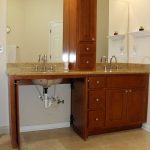
Embracing Universal Design in Your Home: A Smart Choice for Every Homeowner
Functionality and inclusivity have become paramount in the fast-evolving home design landscape. More homeowners are looking beyond aesthetics and focusing on creating spaces that are both beautiful and accessible. Enter Universal Design—an approach that ensures homes are usable by people of all ages and abilities, without the need for adaptation or specialized design. Whether you’re planning a new build, renovating an existing space, or simply looking to future-proof your home, embracing Universal Design is a smart investment in comfort, safety, and longevity.
What is Universal Design?
Universal Design (UD) is an architectural and interior design philosophy that prioritizes usability and accessibility for everyone, regardless of age, mobility, or ability. Unlike traditional design, which may require costly modifications as a homeowner’s needs change, Universal Design integrates accessibility features from the start, making homes more functional and adaptable over time.
By incorporating features like step-free entrances, wider doorways, and lever-style handles, Universal Design creates a seamless living experience that benefits all occupants. For more insights on Universal Design principles and applications, check out Easy Universal Design.
The Key Benefits of Universal Design for Homeowners
1. Enhanced Accessibility for All
Universal Design ensures that individuals of all mobility levels can comfortably navigate their homes. Features such as zero-step entries, open floor plans, and wider hallways allow for easy movement, whether you’re pushing a stroller, using a walker, or carrying groceries. Thoughtful design elements like lower light switches and higher electrical outlets make everyday tasks more convenient for everyone.
2. Aging in Place and Future-Proofing
For homeowners planning to stay in their homes long-term, Universal Design offers a proactive approach to aging in place. Rather than facing costly renovations later, implementing accessible design features now ensures a smooth transition into later years. Features like walk-in showers with grab bars, no-threshold doorways, and stair-free living options provide comfort and security as needs evolve.
3. Increased Home Value
With a growing emphasis on inclusivity and accessibility, homes incorporating Universal Design elements are in higher demand. Buyers recognize the long-term benefits of a home that adapts to life changes, making it a valuable selling point. By investing in Universal Design today, you’re creating a more attractive and marketable property for the future.
4. Safety and Reduced Risk of Injury
One of the primary motivations behind Universal Design is enhanced safety. According to the CDC, falls are a leading cause of injury in homes, especially among older adults. Features like non-slip flooring, good lighting, and stair-free entryways help reduce the risk of accidents. Lever-style door handles and touchless faucets also enhance usability for those with limited hand strength.
5. Improved Convenience for Everyday Life
Universal Design isn’t just for those with mobility concerns—it benefits everyone. Parents with young children, individuals recovering from injuries, and guests with different accessibility needs will all appreciate a home designed for ease of use. Features like pull-out kitchen shelves, sensor-based lighting, and open-concept layouts enhance the overall convenience and functionality of a space.
How to Incorporate Universal Design into Your Home
Entryways and Exteriors
- Install step-free, wide doorways (at least 36 inches) for easier access.
- Use lever-style door handles instead of traditional knobs.
- Incorporate well-lit pathways and motion-activated outdoor lighting.
- Ensure covered entryways for protection from weather conditions.
Kitchens
- Opt for countertops of varying heights to accommodate different users.
- Install pull-out shelves and drawers to enhance accessibility.
- Use touchless or lever-handle faucets for ease of use.
- Provide ample maneuvering space for mobility aids.
Bathrooms

- Install walk-in showers with built-in seating and grab bars.
- Use non-slip flooring to reduce the risk of falls.
- Include comfort-height toilets for easier access.
- Ensure adequate lighting, especially around mirrors and sinks.
Living Spaces
- Design open-concept floor plans for easier movement.
- Lower light switches and raise electrical outlets for better accessibility.
- Use smart home technology for voice-activated lighting, climate control, and security.
- Incorporate contrasting colors to improve visibility for those with visual impairments.
For homeowners considering a renovation or custom home build, working with professionals who specialize in Universal Design is essential. At Ponce Design Build, we integrate Universal Design principles seamlessly into modern homes, ensuring that accessibility never compromises aesthetics. Learn more about our approach to adapted design and how we can create a space that works for everyone.
Universal Design is the Future of Home Design
Universal Design is more than just a trend—it’s a long-term solution that enhances the usability, safety, and value of your home. Whether you’re planning ahead for aging in place, increasing your home’s marketability, or simply looking for ways to make everyday living more convenient, incorporating Universal Design is a decision that benefits everyone.
At Ponce Design Build, we believe that thoughtful design should serve every homeowner’s needs. By embracing Universal Design, you’re investing in a home that evolves with you, providing comfort, functionality, and style for years to come.
Are you ready to explore Universal Design for your home? Contact us today to learn how we can help create a space that works for everyone.
